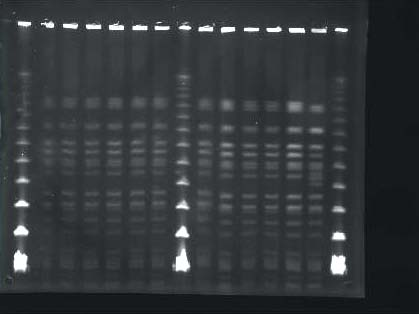Recent efforts are focusing on the use of automated real time PCR which uses fluorescence to detect the presence/absence of a target amplified gene in real time. It has greatly increased the sensitivity and speed of PCR-based detection methods and allows quantification. A potential limitation of DNA based methods is that they may detect both viable and non-viable cells. This is being overcome by Reverse Transcriptase Real time PCR which involves the detection of specific RNA sequences expressed by viable cells only. Ongoing research at The National Food Centre is focusing on the development and application of these technologies for the detection of total viable counts, Salmonella, Campylobacter spp, and Verocytotoxigenic E.coli including E. coli O157:H7 in food. The aim of this work is to develop rapid nucleic acid based methods for food borne pathogens which can be transferred to the food industry for use in assessing and assuring compliance with microbiological criteria for fresh and ready to eat foods.
 Pulse field gel electrophoresis of E.coli O157:H7 isolates
Methods developed for emergent food pathogens are being used in studies to assess their public health importance and to provide the food safety agencies, regulatory authorities and food industry with timely advice on how they should be managed. Molecular sub�typing tools for micro-organism allow them to be compared at a genetic level and is an essential tracking tool in epidemiological investigations. The National Food Centre is employing tools such as Pulse field gel electrophoresis (PFGE) to track pathogens including verocytotoxigenic E.coli, Salmonella and Listeria in the food chain. This is critical to identifying the routes by which these organisms are transmitted through the food chain and in establishing where controls are needed.
Pulse field gel electrophoresis of E.coli O157:H7 isolates
Methods developed for emergent food pathogens are being used in studies to assess their public health importance and to provide the food safety agencies, regulatory authorities and food industry with timely advice on how they should be managed. Molecular sub�typing tools for micro-organism allow them to be compared at a genetic level and is an essential tracking tool in epidemiological investigations. The National Food Centre is employing tools such as Pulse field gel electrophoresis (PFGE) to track pathogens including verocytotoxigenic E.coli, Salmonella and Listeria in the food chain. This is critical to identifying the routes by which these organisms are transmitted through the food chain and in establishing where controls are needed.
contact: Dr Geraldine Duffy,
The National Food Centre, Teagasc, Ashtown, Dublin 15;
E-mail:
[email protected]
; Web:
http://www.teagasc.ie/nfc/
|

